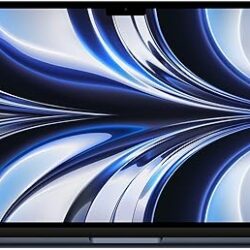Vox.com: The future of astronomy, from the Webb Space Telescope to gravitational waves. https://www.vox.com/science-and-health/2021/9/29/22679217/webb-space-telescope-limitations-future-telescopes
Telescopes are time machines. Someday, they could take us to a time before starlight.
 亚马逊导购/好书推荐
亚马逊导购/好书推荐  读新闻学外语
读新闻学外语  卑诗省当天新盘
卑诗省当天新盘
A telescope is like a time machine. 状语从句When astronomers peer out into the vast distances of space, they’re also looking back in time. That’s 表语从句because faraway light takes a long time to reach us. 状语从句When light from distant galaxies enters our telescopes, it’s like a fossil of a time long gone.
状语从句Just as scientists study fossils on Earth to understand bygone eras, scientists can chart the evolution of the cosmos by looking at starlight of various ages — but there’s a limit to 宾语从句how far back in time we can see.
The Hubble Space Telescope,定语从句 which is orbiting the Earth right now, can see 13.3 billion years back in time. Its successor, the James Webb Space Telescope, will be able to peer even farther back in time than the Hubble 状语从句after it is launched in December.
“We are looking for the first light 定语从句that turned on at the very beginning of cosmic time,” says Caitlin Casey, a UT Austin astronomer 定语从句who has been approved to use the Webb to look for this light.
This is an epic quest. Humans have never before had the technology to see this first light. It will teach us a lot about 宾语从句how our universe formed, and why it looks the way it does today.
But even this first starlight does not represent the beginning of time. The Big Bang occurred hundreds of millions of years before starlight. For most of that time, the universe was shrouded in darkness. And 状语从句when there’s no light, there’s nothing for existing telescopes to observe.
Yet astronomers tell me that one day, new and innovative telescopes may be able to see deeper into that darkness — to break through the barriers 定语从句that even the mighty Webb Space Telescope won’t be able to see through. They dream of putting an observatory in a crater on the far side of the moon, or building one 定语从句that can potentially detect ripples of warped space coming from the calamity of the Big Bang itself.
状语从句When they do, humans may finally be able to piece together a more complete timeline of the history of our universe. And is there any quest more human, or more meaningful, than the drive to understand 宾语从句where we come from?
Let’s start with something very obvious. 状语从句When we look up at the night sky, we can see the stars 状语从句because the universe is see-through. Light can travel hundreds of millions of years — billions, even — across the transparent void to reach us. Lucky for us, scientists can use this light to study the history of the cosmos, and our place in it.
But there was a time 定语从句when our universe was not transparent but opaque. In the beginning, there was darkness.
“状语从句When the universe was first created, it was so hot after the Big Bang, atoms couldn’t exist,” explains Paul Hertz, NASA’s director of astrophysics. “It was just a plasma of subatomic particles.”
There’s no light shining through to us from this extreme early universe 状语从句because light simply cannot travel through a plasma of particles tinier than atoms. Any light 定语从句that existed then “would just go a very short distance状语从句 before it would be scattered off some subatomic particle,” Hertz says.
Eventually, several hundred thousand years after the Big Bang, this plasma cooled and a bit of light broke through. Scientists call this light the cosmic microwave background — essentially the afterglow of the Big Bang — and observatories can see it in very dark places like Antarctica, the Atacama Desert, and in Earth’s orbit.
But this light represents only a small snapshot of the early universe, before stars or galaxies. It’s just a nearly uniform dispersal of matter (and dark matter). Somehow, from that starting point, we get everything 定语从句we see in the universe today.
But soon (cosmically speaking), the universe was dark again. Shortly after the universe cooled, the cosmic dark ages began.
Back in the dark ages, the universe “was full of hydrogen and helium atoms and nothing else,” Hertz says. “And there was nothing to emit light. So it was still dark.”
What’s more, that hydrogen formed “a dense, obscuring fog of primordial gas,” as the National Science Foundation explains. 状语从句If there was light anywhere, it would be shrouded in the fog.
Only a few hundred million years after the Big Bang was “the darkness of the universe … pervaded by light for the first time,” Casey says. Astronomers call this period “cosmic dawn,” 定语从句when the fog lifted and the first starlight shone through the universe. Cosmic dawn, Casey says, permanently transformed the universe “from a dark place to a light place.” That’s the universe 定语从句we still live in today.
Casey says scientists still don’t precisely know 宾语从句what lifted the fog. They suspect 宾语从句the earliest stars provided the energy needed. That’s 表语出价what she and others will investigate with the James Webb Space Telescope. “We’re trying to see the first galaxies turn on, for the first time, and emit their light for the first time,” she says.
But the observatory will leave other mysteries untouched: What happened in the dark ages? What happened in the moments after the Big Bang?
This is表语从句 how, in the future, we might find out.
How special telescopes could see the invisible
How do you see a region of space 定语从句from which no light emanates? Scientists, surprisingly, have some solutions to this problem.
One is to build a radio telescope on the far side of the moon (that is, the side 定语从句that never faces the Earth). This type of telescope could help scientists peer into the dark ages, though not necessarily all the way back to the Big Bang.
During the dark ages, astronomers believe, the hydrogen 定语从句that pervaded the universe emitted very faint radio waves. And that gives astronomers some hope. “You could look back into the dark ages,状语从句 because those atoms were giving off radio waves,” Hertz says.
It’s 表语从句as though they were broadcasting a lonesome signal from near the beginning of time, 定语从句which could make it through the fog.
“状语从句If you build the right kind of radio telescope, very large, very sensitive, then you would be able to detect the radio waves and we could study the universe before the first stars and first galaxies,” Hertz says.
But we can’t detect these faint radio waves from Earth. All the radio transmissions 定语从句that are produced on Earth would drown them out.
This is表语从句 where the moon comes in — as a kind of giant shield. The moon is “thousands of miles of rock, so the radio waves can’t get through that,” Hertz explains. The far side of the moon is quiet enough for us to listen in.
Right now there are a few concepts for these moon telescopes, from one 定语从句that nestles the telescope in a crater to ones 定语从句that involve lunar rovers. There are currently no concrete plans to build and launch one.
Still, even a giant radio telescope on the far side of the moon could only take us so far. It couldn’t take us all the way back to the Big Bang, 定语从句when the universe was just a dense plasma of particles.
The world needs more wonder
The Unexplainable newsletter guides you through the most fascinating, unanswered questions in science — and the mind-bending ways scientists are trying to answer them. Sign up today.
Astoundingly, scientists know of something 定语从句that could get us much closer to the beginning, to make observations of the very early, hot universe 状语从句as it existed soon after the Big Bang. But it would take a very different type of telescope — one定语从句 that can see gravitational waves.
The Webb, the Hubble, and even a future radio telescope on the far side of the moon are all telescopes 定语从句that capture some form of electromagnetism (定语从句which include visible light, infrared light, radio waves, microwaves, ultraviolet, and so on).
Gravitational waves, by contrast, are ripples in the very fabric of spacetime. They form as a consequence of the fact 定语从句that mass can bend space.
And so when massive cataclysms happen in space (say, when two black holes collide), space ripples a bit like after a stone is thrown into a pond. It’s “like flapping space,” Hertz explains. “Space will propagate that movement as waves.”
Gravitational waves are really weird. They literally distort space 状语从句as they move — shrinking it, stretching it — 状语从句as if it were an image in a funhouse mirror. The thing is, 状语从句when these waves reach the Earth, they are almost imperceptibly small, 分词状语making changes on scales smaller than an individual atom.
Remarkably, scientists have the technology to record gravitational waves. In 2015, scientists first detected gravitational waves 定语从句that resulted from the collision of two black holes. Scientists believe 宾语从句that there are gravitational waves emanating from this very early, hot universe 定语从句that existed after the Big Bang, but we would need a huge and specialized observatory to detect them.
“We need to have a gravitational wave observatory 定语从句where the two ends of it are a million kilometers apart,” Hertz says.
And where do you put such an observatory? In space!
Currently, NASA and the European Space Agency have plans for a space-based gravitational observatory called LISA (the Laser Interferometer Space Antenna), to launch in 2034. It will be a constellation of three satellites 定语从句that form a triangle, with each side measuring a whopping 2.5 million kilometers.
“It measures 宾语从句whether the distance between the satellites has changed,” Hertz explains. “And 状语从句if it changes, it’s because a gravitational wave went by and shrank or expanded space.”
Some of those gravitational waves could be coming from that hot cauldron of the post-Big Bang universe.
Why build telescopes?
Scientists build telescopes to learn about the history of the cosmos and 宾语从句where we fit into it. When we build observatories to peer into the cosmic dark ages, into the fiery heart of the Big Bang, humans fill in the blank spaces in our timeline of the evolving universe. Telescopes help answer the question: Why does the universe look the way 定语从句it does today?
This urge to understand may be even deeper and more philosophical than curiosity. As Casey, the UT Austin astronomer, puts it: “Humans 分词定语trying to understand the universe is really the universe trying to understand itself.”
We humans aren’t separate from the universe. We are of it. The Big Bang, the cosmic dark ages, cosmic dawn … all of this history led to us.
In this light, 动名词building telescopes is a means to make our corner of the universe self-aware.
There’s a virtuous cycle here. The Webb Space Telescope will generate incredible images 定语从句that are only going to inspire more people to get interested in science, to be curious about the universe 定语从句they inhabit. Those people may dream up the next barrier-breaking telescope, and the cycle will continue.
There will never be one ultimate telescope定语从句 that can see everything 定语从句humans want to see. “Each telescope, 状语从句whether it’s on Earth or in space, is designed to do a particular kind of science,” Hertz says. Even the mighty LISA, capable of peering back to near the very beginning of time, would be blind to some things, like starlight. Other future telescopes might not set their gaze on the beginning of time, but rather on the many planets 定语从句that revolve around other stars,状语从句 as they search for another Earth.
“We’re just a bunch of humans 分词定语floating on a rock through space,” Casey says. “It’s wild, 状语从句when you think about it, 主语从句that we’re able to even piece together宾语从句 what happened before the Earth or the sun even existed.”
Telescopes of the future will bring even more of that history into focus.
We have a request
In moments like this — as people grapple to understand variants and vaccines, and kids head back to school — many outlets take their paywalls down. Vox’s content is always free, in part because of financial support from our readers. We’ve been covering the Covid-19 pandemic for more than a year and a half. From the beginning, our goal was to bring clarity to chaos. To empower people with the information 定语从句they needed to stay safe. And we’re not stopping. To our delight, you, our readers, helped us hit our goal of adding 2,500 financial contributions in September in just 9 days. So we’re setting a new goal: to add 4,500 contributions by the end of the month. Reader support helps keep our coverage free, and is a critical part of sustaining our resource-intensive work. Will you help us reach our goal by making a contribution to Vox with as little as $3?








